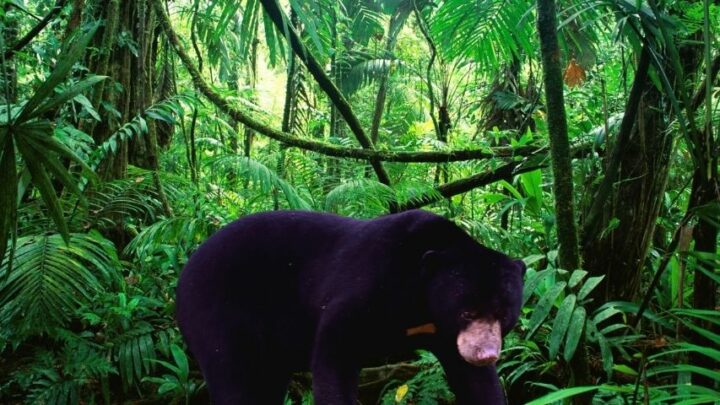Bears look cute when you see them as stuffed animals. Bear cubs look cute in person.
The reality is that bears are ferocious predators and easily angered. They are also territorial and fight each other for territories.
According to many studies by scientists and journalists, bears are tremendously nasty in temperament.
There are many species of bears, ranging from the common Black Bear, mostly found in North America, to the Polar Bear of Antarctica, Russia, Siberia, and Canada.
Mix in there Grizzly Bears, Brown Bears, who do pop up in many regions of the world and the list of bears species is quite long.
But, do bears actually exist in the jungle?
Are There Bears in the Jungle?
There are bears in the jungle. The Sloth Bear, the Sun Bear, and the Andean Bear have all been recorded in jungles. The Sun Bear resides in the tropical jungles of Southeast Asia and is the most common jungle dweller. Sun bears have great climbing abilities. Southeast Asia is being deforested and this is a problem for Sun Bears.

Are There Bears in the Jungle?
Do Bears Really Exist In the Jungle – The Answer
All bears climb trees, but Sun Bears spend the greater part of their time in trees, rather than dens or caves, and do overlook their territory from nests where they sleep.
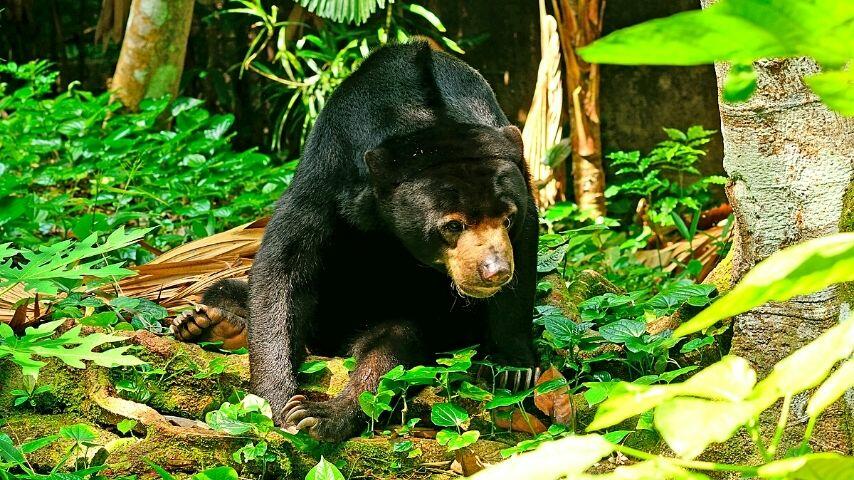
Sun bears spend most of their time in trees unlike other bear species that rest in caves or dens
Over-zealous deforestation has led to the Sun Bear seeking a more unique method of staying out of sight and this has happened gradually over the years as the Sun Bears adjusted to a deforested life in the jungles of Southeast Asia.
Deforestation is done throughout the world to increase agricultural possibilities, and enhance the lives of humans living in densely forested areas.
However, it is also detrimental to some habitats for animals and this is the case with Sun Bears who no longer had a forested jungle.
Giant Pandas no longer live in the wild as they are so endangered but they are indigenous to the jungles of China. Now they only live at rescues, zoos, and of course, Panda Preserves.
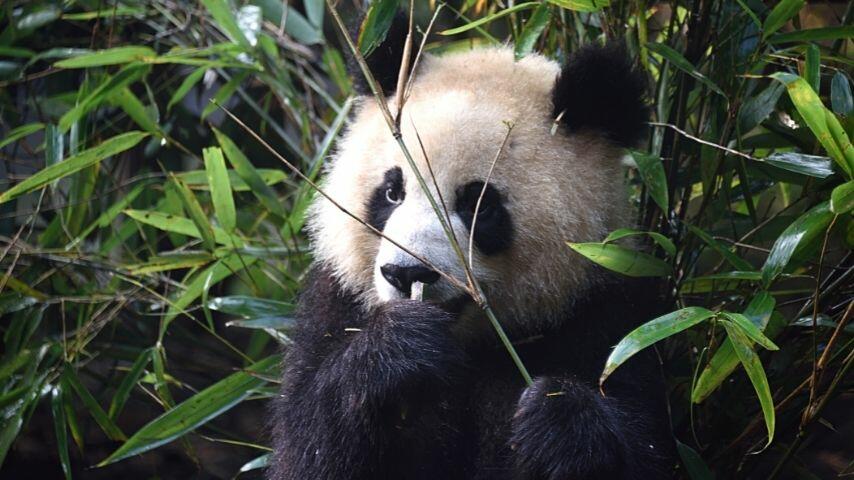
Giant pandas are no longer living in the wild as they’re an endangered species
4 Ways That Bears Cope in a Jungle
1. All bears are built with heat relief
Although covered with fur, bears have the pads of their feet, their nose, and certain parts of their face that have no fur.
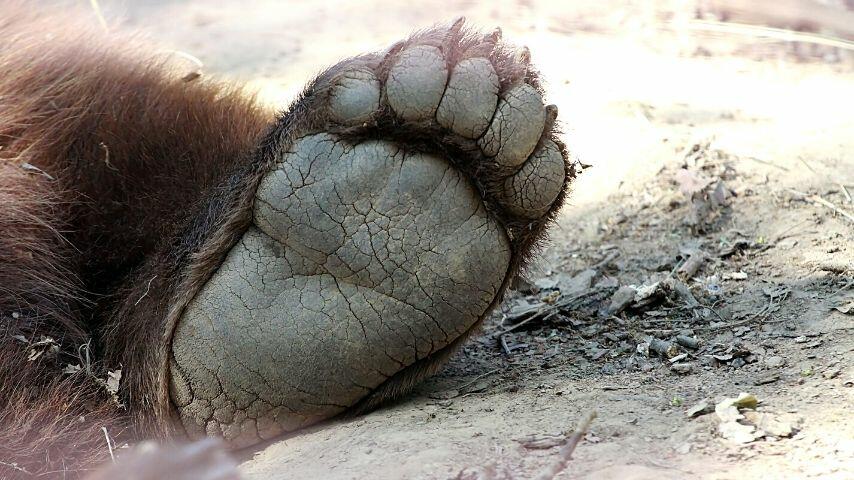
The pads on a bear’s feet help in protecting it from the heat
Heat is dissipated through these areas naturally. Bears seek shade when very warm and also water sources to cool off.
Most bears eat a lot to bulk up for hibernation so do not usually cut back on food as humans do when they become overheated.
2. Bears spread their legs and loll around
Most bear species do this on the ground to release heat. Jungles however are notoriously hot, and the deforestation plus the climate change has made these locations hotter with heat that is extremely intense.
The Sun Bear does take to the very top of the trees to escape the blistering heat and is very elusive to find and observe as a result.
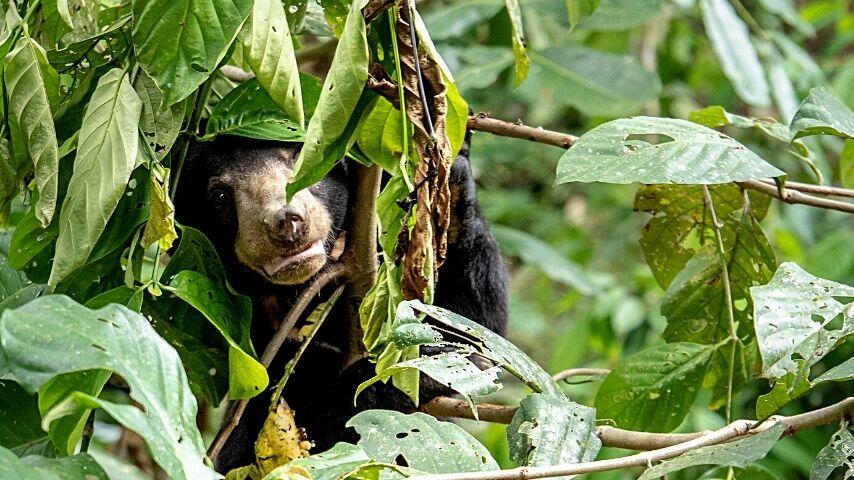
One way the Sun Bear cools itself off is by spending time at the very top of the trees
If in a rainy season the Sun Bear will stand in the rain to cool off.
3. Bears seek out water
Not only do they eat fish as a staple diet, but bears do go into the water to cool off. There are pools of water in a jungle, especially during the rainy season, and bears find these.
It has been noted that only Polar Bears are good swimmers although all bears can paddle around.
Bears go into the water and splash around to stay cool and drink and eat all at the same time. This is especially true in the jungle when water and foliage are hard to find during the dry season.
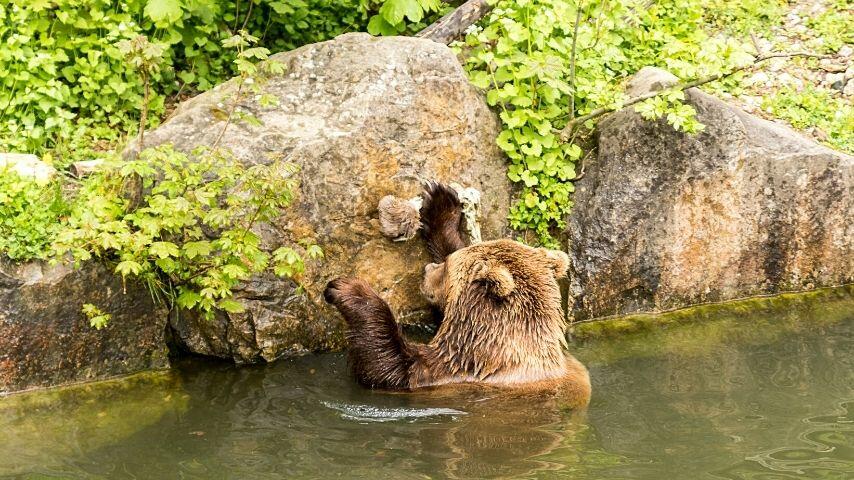
Bears stay in the water when they’re hunting for fish, drinking, or for cooling off
Bears eat almost anything and are omnivores mixing plant foods with meat and insects for protein.
Bears in areas that surround humans will jump into baby pools and eat garbage (garbage containers and ALL)!
4. Bears adapt seasonably
All bears are feeling the effects of climate change, but especially the Sun Bear.
The Sun Bear will conserve its energy during the day, forage at night, and wait for the rainy season in the jungle which will cool off the palm fronds, and other vegetation enough so that the Sun Bear gets relief.
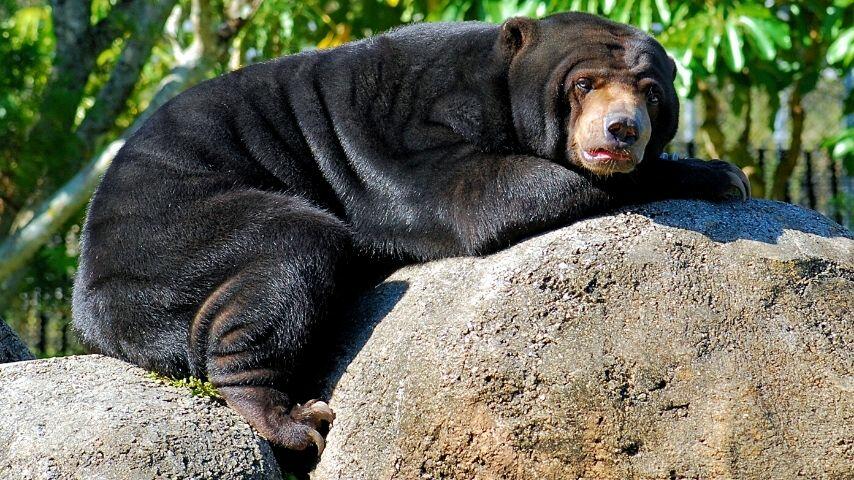
In response to climate change, Sun Bears conserve their energy in the day and forage at night
The rainy seasons are long generally which is helpful to the Sun Bear.
There really are only two seasons in a tropical rainforest jungle – the wet season and the dry, hot season. Nothing is in between.
Sun Bears do not hibernate as they live in a jungle where food supply and warmth are always available.
Some Polar Bears do not hibernate except for pregnant females. Hibernation is done to preserve fat storage and some bears do not need this.
Frequently Asked Questions about Whether Bears Exist in the Jungle
I’m taking a trip to Vietnam. Can I approach a Sun Bear or feed it?
Bears are very ill-tempered, and will even kill other bear cubs that cross over on territories. Males will kill bear cubs just to mate. While Sun Bears are not as large as Grizzly Bears or Polar Bears, all bears share the same temperament, and attacks by all species of bear have been recorded.
If I do encounter a bear what should I do?
Be still and be quiet. Loud noises only enrage bears and despite their large size bears are quite fast. However, if you can run downhill you might outrun the bear as their hind legs are longer than their front legs and this impedes their running downhill.
Should I fight back if a bear charges me in a jungle?
Fighting back makes a bear more aggressive but if you must fight back then do so as a bear attack is in the bear’s favor. Do not throw sticks, etc. as this will turn a “bluff attack” into an all-out brutal assault by a bear.
Summary on Are There Bears in the Jungle
There certainly are but the species of bears are limited, with the Sun Bear being the most common and lives in the tropical jungles of Southeast Asia.
Other species such as the Andean and Sloth Bear can live in the jungles surrounding South America.
Most species of bears however live either in a totally cold climate, like the Polar Bears, or a combination climate, like the Brown Bear, the Black Bear, and the Grizzly Bear.
Whichever bear you adore, do not ever approach. As big as they are bears are nervous creatures and very territorial.
Watch from a VERY safe distance only and NEVER feed a bear. Bears adapt to habitats easily but it is not safe to feed them and allow them to adapt to human habitats.

